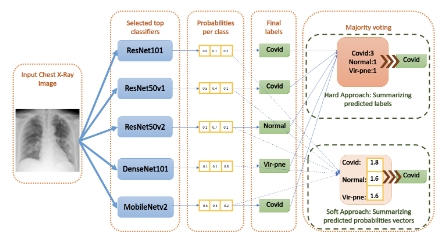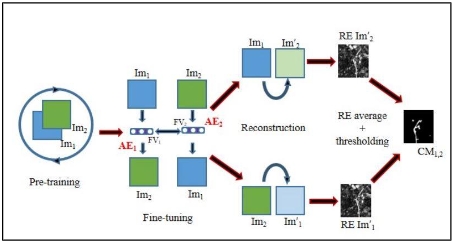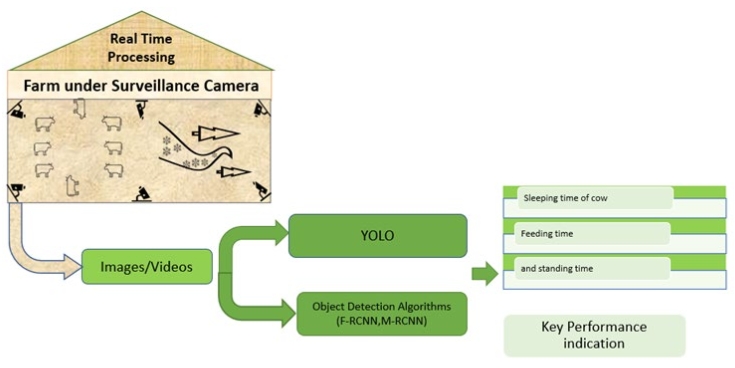Medical image classification using a quantified hazard ratio and a multilayer fuzzy approach
Abstract
We previously developed two AI-based medical automatic image classification tools using a multi-layer fuzzy approach (MFA and MCM) to convert image-based abnormality into a quantity. However, there is currently limited research on using diagnostic image assessment tools to statistically predict the hazard due to the disease. The present study introduces a novel approach that addresses a substantial research gap in the identification of hazard or risk associated with a disease using an automatically quantified image-based abnormality. The method employed to ascertain hazard in an image-based quantified abnormality was the cox proportional hazard (PH) model, a unique tool in medical research for identifying hazard related to covariates. MFA was first used to quantify the abnormality in CT scan images, and hazard plots were utilized to visually represent the hazard risk over time. Hazards corresponding to image-based abnormality were then computed for the variables, ‘gender,’ ‘age,’ and ‘smoking-status’. This integrated framework potentially minimizes false negatives, identifies patients with the highest mortality risk and facilitates timely initiation of treatment. By utilizing pre-existing patient images, this method could reduce the considerable costs associated with public health research and clinical trials. Furthermore, understanding the hazard posed by widespread global diseases like COVID-19 aids medical researchers in prompt decision-making regarding treatment and preventive measures.
References
[1]Akula KK, Gegov A, Arabikhan F. Artificial Intelligence-Based Medical Image Classification using a Multilayer Fuzzy Approach. Wseas Transactions on Computers. 2023; 22: 206-217. doi: 10.37394/23205.2023.22.24
[2]Akula KK, Gegov A, Arabikhan F, et al. Medical Image Classification using a Many to Many Relation and a Multilayer Fuzzy Approach. Electronics MDPI 2024 (under review).
[3]Wang Z. Multi-scale structural similarity for image quality assessment. In: Proceedings of the 37th IEEE Asilomar Conference on Signals, Systems and Computers, Pacific Grove, CA, 2003.
[4]Wulczyn E, Steiner DF, Xu Z, et al. Deep learning-based survival prediction for multiple cancer types using histopathology images. Hsieh JCH, ed. PLOS ONE. 2020; 15(6): e0233678. doi: 10.1371/journal.pone.0233678
[5]Furrer MA, Sathianathen N, Gahl B, et al. Oncological outcomes after attempted nerve‐sparing radical prostatectomy (NSRP) in patients with high‐risk prostate cancer are comparable to standard non-NSRP: A longitudinal long-term propensity‐matched single‐centre study. BJU International. 2023; 133(1): 53-62. doi: 10.1111/bju.16126
[6]National Cancer Institute. Available online: https://www.cancerimagingarchive.net/ (accessed on 23 October 2023).
[7]John M. Last, A dictionary of epidemiology, Oxford University PESS, 2001.
[8]Bradburn MJ, Clark TG, Love SB, et al. Survival Analysis Part II: Multivariate data analysis – an introduction to concepts and methods. British Journal of Cancer. 2003; 89(3): 431-436. doi: 10.1038/sj.bjc.6601119
[9]Cox DR. Regression Models and Life‐Tables. Journal of the Royal Statistical Society: Series B (Methodological). 1972; 34(2): 187-202. doi: 10.1111/j.2517-6161.1972.tb00899.x
[10]Balakrishnan N, Rao CR. Handbook of Statistics 23: Advances in Survival Analysis, North Holland. 2004.
[11]Bradburn MJ, Clark TG, Love SB, et al. Survival Analysis Part II: Multivariate data analysis—an introduction to concepts and methods. British Journal of Cancer. 2003; 89(3): 431-436. doi: 10.1038/sj.bjc.6601119
[12]Schoenfeld D. Partial residuals for the proportional hazards regression model. Biometrika. 1982; 69(1): 239-241. doi: 10.1093/biomet/69.1.239
[13]Kleinbaum DG, Klein M. Survival Analysis. Springer New York; 2012. doi: 10.1007/978-1-4419-6646-9
[14]Deo SV, Deo V, Sundaram V. Survival analysis—part 2: Cox proportional hazards model. Indian Journal of Thoracic and Cardiovascular Surgery. 2021; 37(2): 229-233. doi: 10.1007/s12055-020-01108-7
Copyright (c) 2024 Kishore Kumar Akula, Monica Akula, Alexander Gegov

This work is licensed under a Creative Commons Attribution 4.0 International License.










